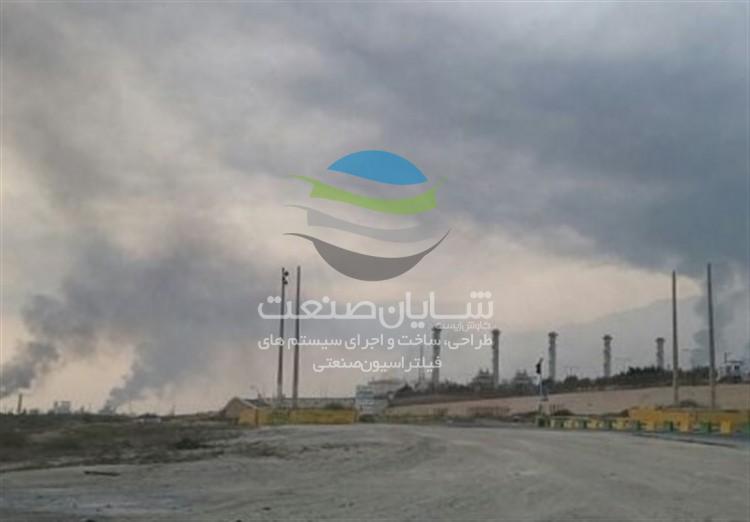Introducing a scientific and new method for pollution control
The steel industry is one that deals with a huge amount of consumables and energy. More than half of the input of these industries in the output is in the form of soot and solid particles, and as a result, the issue of controlling this huge volume of environmental pollutants is very important. Among the various technologies of steel production, the use of electric arc furnaces to create high temperatures in steel is increasingly popular.
According to statistics provided by reputable international organizations, approximately 35% of the world’s 1,220 million tonnes of steel production in 2009 was made using this technology, the main reason being the possibility of using scrap as furnace feed. , Which is widely available. The worrying point is that in these industrial units, the temperature and concentration of environmental pollutants in the exhaust gases are very high, which in addition to wasting huge amounts of energy, is a serious source of environmental pollution. For this purpose, the existence of a system to reduce the temperature and concentration of pollutants in these very important industrial units is vital and has received much attention. Due to such considerations, the use of adsorption systems and reduction of gas temperature and concentration of pollutants in electric arc furnaces of steel industry has been considered. In current designs developed by reputable companies, WTI and Tenova Ledoux remove steel technology such as pollutants and suspended particles from the furnace by combustion reactions as well as a sedimentation system. Exhaust gases from the electric arc furnace have a temperature of approximately 1700 ° C and include hydrogen, carbon monoxide, carbon dioxide, water vapor, nitrogen, argon, as well as particulate matter from compounds in the Steelmaking Handbook, oxides.
The soot and dust removal systems of these gases move along the water-cooled channel and enter the elbow-shaped channel. The air required for combustion reactions is sucked into the system through the empty space between the elbow and the slider due to the negative relative pressure of the gases. Next, a two-phase solid-gas stream enters the settling / combustion chamber. In this chamber, with a sudden change in cross-sectional area, the flow velocity decreases abruptly. After this stage, the gas enters another channel (this channel is also cooled by water) and finally, by reducing the temperature of the gas, it reduces it to half the initial temperature. As a result, the gas flow enters the air-cooled converter and cools the gas by transferring free heat transfer and its temperature is reduced to an acceptable level. With a little reflection, it becomes clear that the characteristics influencing the performance of such a system are very broad. For example, the combination of the components of the concentration of pollutants and the concentration of suspended particles in the exhaust gas of the furnace strongly affects the nature of the reaction flow and the performance of the system.
Also factors such as cooling water flow rate, cooling water temperature, geometry and sections used for pipes, material and amount of roughness of pipes, in addition to the effect on mixing and combustion of fuel flow and oxidizer by changing the amount of flow turbulence, flow physics It changes the sedimentation rate of suspended particles, the average flow temperature and the chemical composition of the fluid. Therefore, in order to achieve proper performance, it seems necessary to study the behavior of the system under the influence of each of these characteristics. On the other hand, it is very difficult, costly, and even impossible to study such characteristics empirically in an industrial system.
Author: Mohammad Mehdi Esmaili, Mostafa Esmaili, Hadi Amirshaghi

